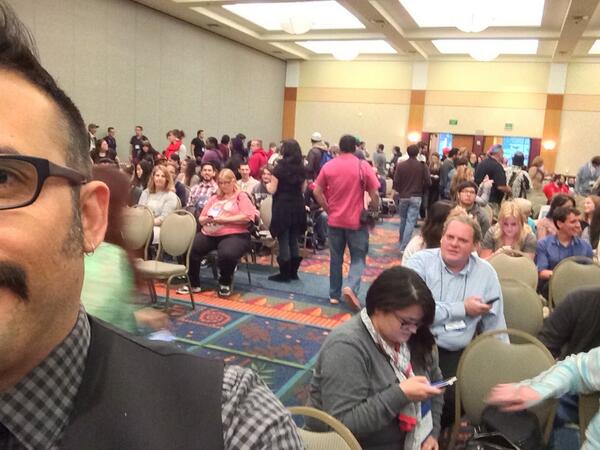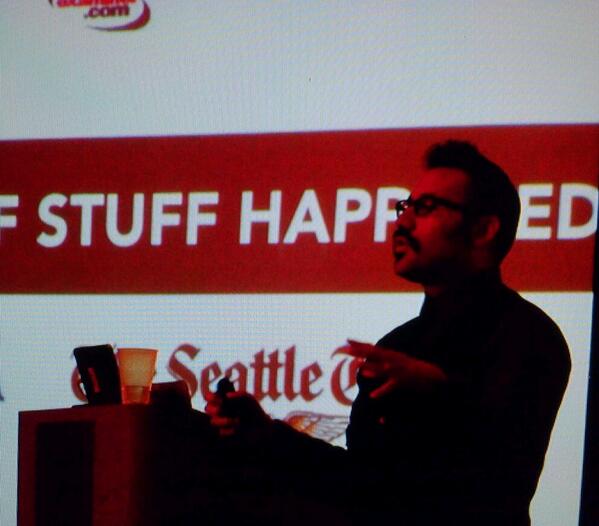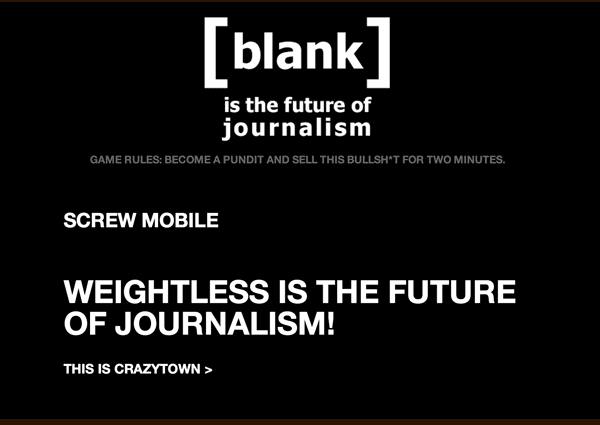The journalists’ (and my) struggle is real
Notice: Only variables should be assigned by reference in /home3/elprofem/public_html/wjorg/blog/wp-content/themes/wj-theme/functions.php on line 526
Notice: Only variables should be assigned by reference in /home3/elprofem/public_html/wjorg/blog/wp-content/themes/wj-theme/functions.php on line 526
1 comment
NOTE: Let’s get this cleared and out of the way. I am not a typical journalist. I don’t have a regular byline nor do I have a media company having to deal with angry voices that value perception more than reality. So, these thoughts are “easier” for me to express than others in our industry. I’ll also add, these are just my thoughts… often thinking, speaking or tweeting out loud as I try to grapple how I fit in the world around me.
BACKSTORY
This wasn’t a new internal debate I’ve been having. In fact, since the middle of the primaries, I’ve been asking myself – and any journalist who would let me bend their ear – the question about how I, or we, as a journalist am feeling about the the tone and coverage as the country began to select the next president.
I, as someone who aims to be an informed citizen, couldn’t tell what was real. I didn’t know what was fact or what was “fake news.”
And, to get this on the record, this concern wasn’t limited to one candidate. In the end, both the Democratic and Republican candidates had some significant flaws that should force any voting citizen a moment to pause.
But, let’s also be honest, one candidate said and behaved contrary to some fundamental beliefs I hold dear. I am unapologetically against racism, xenophobia, sexism, homophobia and anything that leads to discrimination of others.
I, like I believe many people have, have always thought about “what would I have done” if… if there were a robbery, would I be a hero? If I saw police brutality what would I do? And, the ultimate hypothetical scenario, if I were around the time of Hitler, would I do something to speak up and defend the Jews.
I am also a Catholic (although I do not agree with many of the church’s political stance) and this past Sunday’s set of readings really affected me as President Trump’s executive order banning the travel of Muslim immigrants was happening.
All this got me to tweet. Not saying it was a good or bad decision, but here they are with some context.
I keep my faith to myself. I hate preachy people. But I thought there was hypocrisy and discrimination with the Muslim Ban and these readings really called it out.
1/ Any Catholic that went to church today had to be affected by the readings with the #MuslimBan happening. https://t.co/wqTGGiGuWx
— Robert Hernandez (@webjournalist) January 29, 2017
I then tweeted out quotes from the readings, which I will spare you. But here is Tweet 2, 3, 4 and 5 in the series.
6/ I, a Catholic who believes in equal/human rights regardless of race, gender, religion, sexual orientation, was affected by the readings.
— Robert Hernandez (@webjournalist) January 29, 2017
This was the tweet that would spark a Poynter piece about this struggle.
7/ As journalist, this has been a tough time. Do I watch and report or do I participate. This has been a challenging time for many of us.
— Robert Hernandez (@webjournalist) January 29, 2017
This is the moment where I went off my planned topic and decided to be more open and share my struggle with our current reality.
Like many of you, I’ve done the mental exercise: What if I were there went Hitler were oppressing the Jews. Would I stand up and fight?
— Robert Hernandez (@webjournalist) January 29, 2017
I never thought that this scenario would actually happen in my lifetime. Never thought it would happen in our country. But it is happening.
— Robert Hernandez (@webjournalist) January 29, 2017
I am against racism. I am against sexism. I am against xenophobia. I am against homophobia. That doesn’t change as a patriot or journalist.
— Robert Hernandez (@webjournalist) January 29, 2017
That also doesn’t change because I am a Catholic or son of Immigrant from a country that has had thousands of refugees.
— Robert Hernandez (@webjournalist) January 29, 2017
I want to be clear. I am an independent who believes in serving all humanity. That is not pro or anti any political party.
— Robert Hernandez (@webjournalist) January 29, 2017
BUT, I have to get on the record that I fundamentally disagree with what Trump is doing. (That has not anti-US or anti-GOP).
— Robert Hernandez (@webjournalist) January 29, 2017
He is still my president. While I didn’t vote for him we, the people, have spoken. But we, the people, need to keep speaking.
— Robert Hernandez (@webjournalist) January 29, 2017
I stand with you. As a proud U.S. citizen and as a proud journalist teaching and practicing the value of the Fourth Estate.
— Robert Hernandez (@webjournalist) January 29, 2017
There were lots of “likes,” retweets and replies, including this one from Joshua Johnson.
@webjournalist Reporting IS participation. Incisive & meaningful. Journalists are inside the action… let's not miss our chance to do good.
— Joshua Johnson (@jejohnson322) January 29, 2017
This led to an exchange with Katie Hawkins-Gaar of Poynter, who asked if she could use my tweets for a piece she’d write based on this struggle many of us seem to be facing.
That led to this:
This tweet prompted me to write an article for @Poynter. Would love to hear your thoughts/experiences. https://t.co/ubBMqkknNx https://t.co/AJp4Mh6Ewp
— Katie Hawkins-Gaar (@katiehawk) January 31, 2017
I will admit, I was and still am nervous for sharing. I took a risk in exposing myself. So far I haven’t gotten in trouble.
But others aren’t so lucky.
Lewis Wallace wrote about his struggle in this new reality too. But he was then fired from his job at Marketplace.
Clearly I disagree with this move.
Reporter @lewispants was fired for having same Qs I tweeted: How does Trump affect our role as journalists/citizens https://t.co/Ag6ChFi1eq
— Robert Hernandez (@webjournalist) February 1, 2017
This era – regardless of your political point of view – is unlike any other. And we need to talk about this, at the very least in newsrooms.
— Robert Hernandez (@webjournalist) February 1, 2017
We also need to be clear: Is being anti-racist, anti-homophobic, anti-xenophobic, anti-sexism a bias? Think about that. Inclusivity a bias?
— Robert Hernandez (@webjournalist) February 1, 2017
We need to explore this. We need to feel uncomfortable. We need to stop talking about how journalism is changing.. let's be real.
— Robert Hernandez (@webjournalist) February 1, 2017
Who am I to ask, but I will anyway: I ask newsroom's not to fire reporters for having diverse perspectives, but embrace and explore them.
— Robert Hernandez (@webjournalist) February 1, 2017
I don’t know what the answer is, but I do know this is something we need to discuss and examine. This is happening. This is a reality. This isn’t something we can simply ignore or kick out of our newsrooms. This is the time for journalism to embrace the diversity of perspectives from every side and find a way to factor them into our coverage, ethically and transparently.
This is part of the new journalism, and it’s going to get uncomfortable and messy.
I am ready. Are you?


 If I follow you on Twitter, you may have noticed that I’ve have added you to a Twitter list: Male or Female.
If I follow you on Twitter, you may have noticed that I’ve have added you to a Twitter list: Male or Female.







